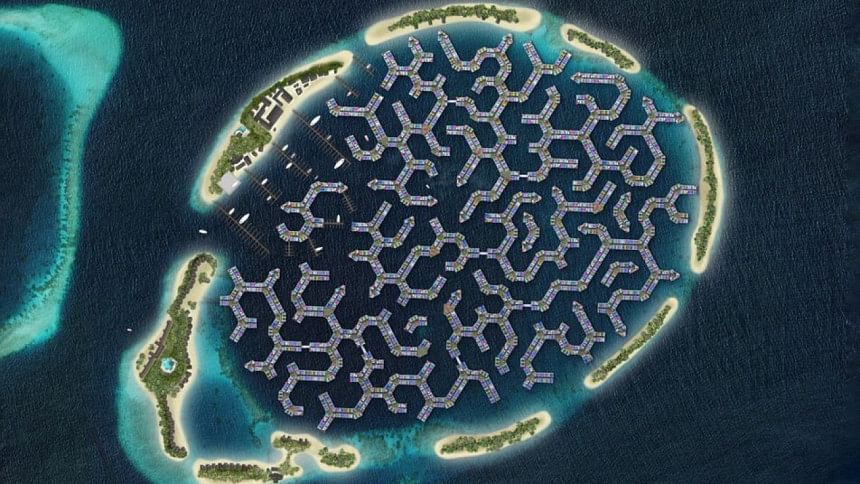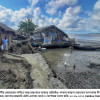A modern marvel? Floating city rising from the Indian Ocean

A city is rising from the Indian Ocean.
The floating city large enough to house 20,000 people is being built in a turquoise lagoon – just 10 minutes by boat from Male, the Maldivian capital, CNN reports.
The city will be built in the shape of a brain coral, with 5,000 floating units including houses, restaurants, shops, and schools with canals running in between. The first units will be unveiled this month, with residents expected to begin moving in early 2024, and the entire city is expected to be finished by 2027, the CNN report said.
The project, a collaboration between property developer Dutch Docklands and the Maldives government, is not intended to be a wild experiment or a futuristic vision. It is being built as a practical solution to the harsh reality of sea-level rise, CNN said.

The Maldives is one of the most vulnerable countries in the world to climate change. Eighty percent of its land area is less than one meter above sea level, and with levels expected to rise up to a meter by the end of the century, nearly the entire country could be submerged, said the report published on June 20, 2022.
But a floating city could rise with the sea
This is "new hope" for the more than half a million people of the Maldives, said Koen Olthuis, founder of architecture firm Waterstudio that designed the city. "It can prove that there is affordable housing, large communities, and normal towns on the water that are also safe. They (Maldivians) will go from climate refugees to climate innovators," he told CNN.
According to the report, the project's goal is to build a city for 20,000 people in less than five years. Other floating city plans, including Oceanix City in Busan, South Korea, and a series of floating islands in the Baltic Sea developed by the Dutch company Blue21 have been announced, but none compete with this scale and timeframe of this project.
The Maldives' capital is vastly overcrowded, with no room for expansion other than into the sea, it said.

The modular units are built in a nearby shipyard and then towed to the floating city. They are then attached to a large underwater concrete hull that is screwed to the seabed on telescopic steel stilts that allow it to gently fluctuate with the waves. The coral reefs that surround the city act as a natural wave breaker, stabilizing it and preventing seasickness.
Olthuis told CNN that the structure's potential environmental impact was rigorously assessed by local coral experts and approved by government authorities before construction began. Artificial coral banks made of glass foam are connected to the city's underside to support marine life, which he claims helps stimulate coral growth naturally.
There will be electricity, powered predominantly by solar generated on site, and sewage will be treated locally and repurposed as plant manure. Instead of air conditioning, the city will use deep water sea cooling, which involves pumping cold water from the deep sea into the lagoon, thereby saving energy, the report said.
The goal is for the city to be self-sufficient and to perform all of the same functions as a city on land.

 For all latest news, follow The Daily Star's Google News channel.
For all latest news, follow The Daily Star's Google News channel. 







Comments